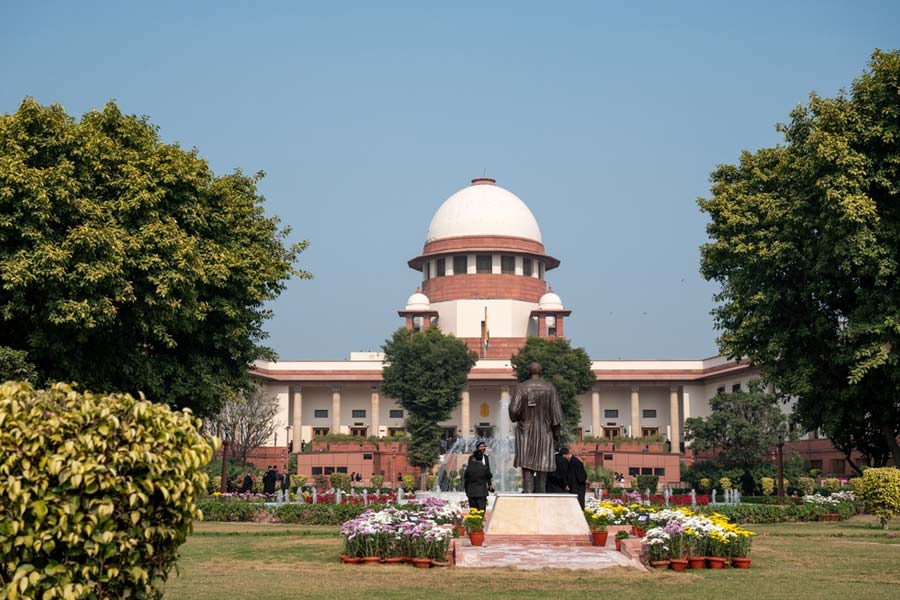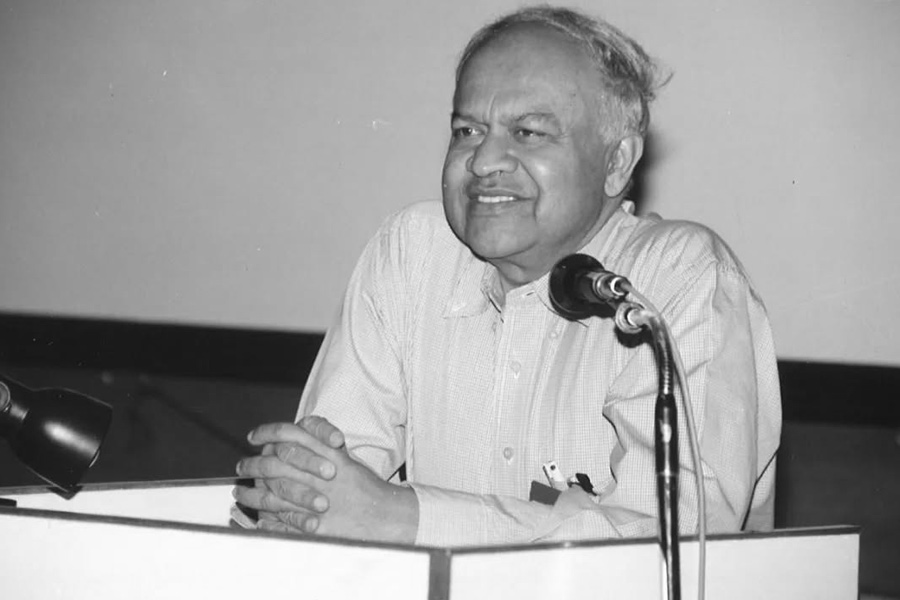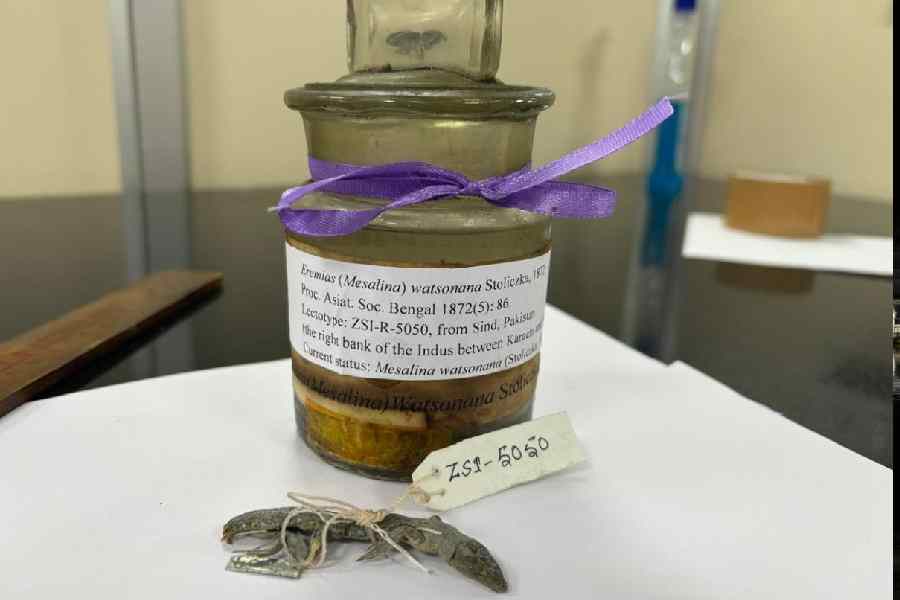 |
| The 21.1 km long Krem Tyngheng is the third largest cave in the country; (below) a member of the Meghalaya Adventure Tours inside the Krem Chympe river cave, where the waters can be as deep as 20m |
 |
It’s a subterranean world of winding, narrow passages that open up suddenly into vast chambers, give way to deep shafts or stacks of fascinating stalagmites and stalactites. You may have to take a boat ride, swim across dark waters and even have close encounters with wildlife that’s difficult to chance upon anywhere else.
Say hello to caving — the new sport for adventure lovers — and the promise is that it will be high on excitement from the word go.
“Caving or spelunking is about exploring natural caves,” says Dr Leishangthem Surjit, president of the Manipur Mountaineering and Trekking Association. Based in Imphal, it organises expeditions to some of the 130-odd caves in the hill district of Tamenglong in Manipur.
The best part of caving is discovering virgin caves that are part of the unexplored ecosystem.
But caving is not for the faint- hearted. Prepare to encounter strange creatures that inhabit the caves and for unexpected situations that might arise.
“There could be any kind of creature and situation depending upon the type of cave and where it is located — inside a forest, a water body or on a high-altitude mountain,” agrees Sanjay Saini, owner of Delhi-based Escapade Adventure Holidays.
Even as caving is a new-age sport in India, the takers at the moment are mostly adventurists, says Gaurav Kataria, founder of Adventure and Expedition Travels that arranges hardcore caving trips for professional cavers.
His extreme packages include overnight stays inside the caves. “I have slept three nights in a cave, beneath millions of endangered bats. I would rather like to forget that experience,” he adds with a chuckle.
In the Northeast, the activity is popular in Meghalaya, Mizoram and Manipur which boast of many unexplored caves. Serious cavers say that Meghalaya, with its cache of 1,285 mapped caves, is the best place for caving. Expect to bump into bizarre wildlife like cavefish sans eyes and fist-sized spiders.
“There’s Krem Liat Prah-Um Im-Labit, the longest cave in the sub-continent at 31km, while Synrang Pamiang is the deepest at 317m,” says Brian Daly, general secretary of Meghalaya Adventure Tours. The travel outfit, recognised by Meghalaya Tourism, organises week-long trips from Shillong to caves along the southern belt of Meghalaya.
 |
| The Tharon caves in Manipur have unique sedimentary rocks and sandstone and shale formations |
Kataria asks his clients to get their own equipment. But other operators often provide equipment within caving packages.
In neighbouring Manipur, the Tharon cave and the Kangkhui cave are the spots to hit.
In Maharashtra get into the groove with Nature Knights, an adventure company that takes you to caves in Ratnagiri along the Konkan Coast. “There are more caves along the Western Ghats and we are scheduling trips to Meghalaya soon,” says M. Asif, founder of Nature Knights.
The caving options in the South are best suited for amateur cavers as they are touristy and basic. The Belum caves in the Kurnool district of Andhra Pradesh can be explored through expeditions arranged by Andhra Pradesh Tourism.
Meanwhile in Karnataka, small caving expeditions are conducted by the National Adventure Sports Academy in Chandravalli and Antaragange.
The best time for caving is between November and March (when there’s less chance of caves being flooded).
It’s an expensive sport and demands a lot of equipment. Five day trips by The Manipur Mountaineering and Trekking Association are Rs 10,000 per person and take care of everything from equipment to guides, transportation, food and lodging.
Nature Knights offers caving with rappelling at Ratnagiri. A two-day and three-night camp costs Rs 3,900 per head and includes travel between Imphal to the Tharon cave, training charges, vegetarian meals and accommodation.
 |
| A team member of Nature Knights crawls through a cave that goes below sea level near Ratnagiri port |
Caving is referred to as an extreme sport because it requires a fair degree of fitness and a sense of adventure. “Caving involves the skills of a mountaineer and that of a diver — to be able to negotiate deep pitches, rivers and lakes,” warns Daly.
According to Asif caving is a mixture of activities like free-hand rock climbing, rappelling, jumaring (climbing vertical caves or overhangs using mechanical ascenders), negotiating tight squeezes, walking and sometimes swimming.
For serious cavers, Daly advises a caving course of a minimum of two weeks to get the basics in place.
You will get dirty, you will have to crawl and you will get wet. But yes, the world will be a less boring place .
MUSTS & MUST-HAVES
• Caving can be done by anybody who is not claustrophobic and has basic fitness levels
• Caving is a team sport. Never venture out alone
• Caves are very fragile ecosystems, so keep in mind minimum impact tourism
• sStock up on flash lights, gloves, knee guards, elbow guards, headgear with lights, 12mm climbing ropes, rock climbing devices like carabineers, harness, chokes, pitons, jumars and descenders, hydration packs/water bottles, refreshments and small oxygen cylinders










